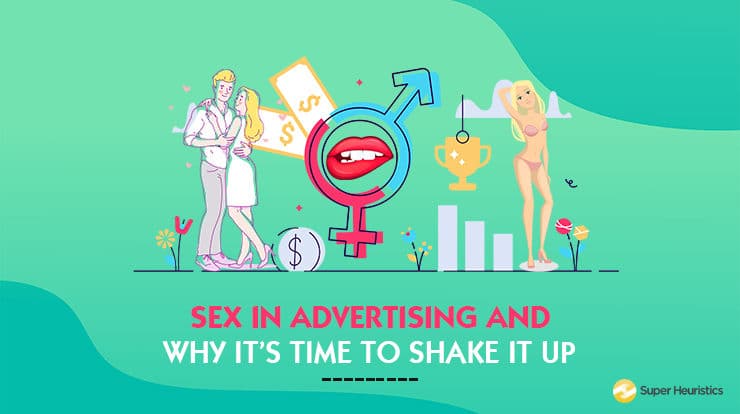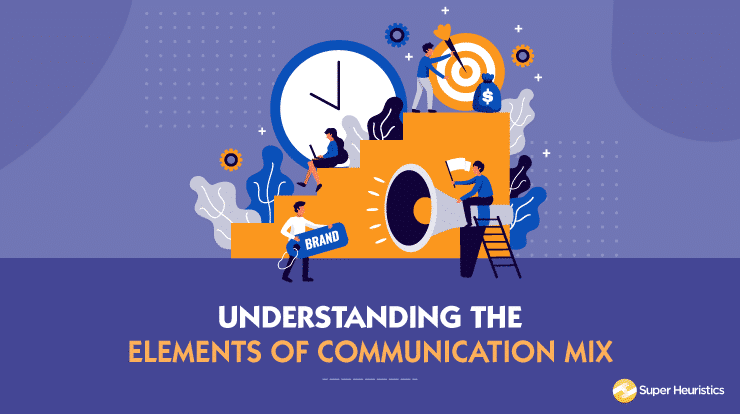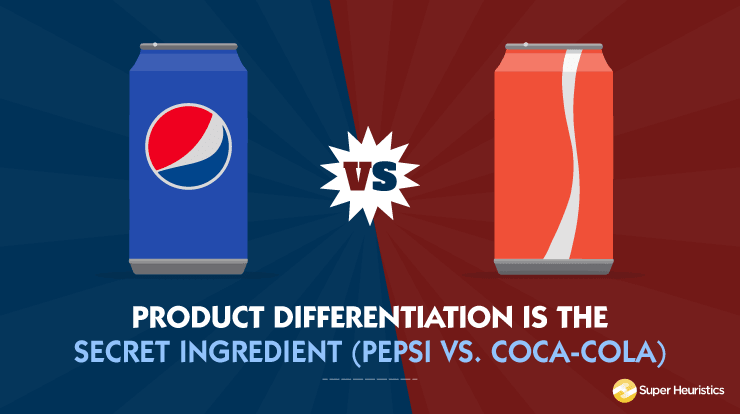
Advertising – perhaps one of the most powerful tool for marketers in today’s increasingly competitive world. An advertisement puts your right in front of your audience. As a brand manager it is your temporary real estate on the audiences' various media. As Sudhir Sitapati mentions in his book, 'The CEO Factory', HUL spends around ₹3500 Crores (about 15% of their spends) on advertising every year! How interesting would it becomes when brand managers utilize sex in advertising to capture your attention and imagination.
It is interesting to learn how do advertisers try to sell products and services by using different techniques.
Naturally, you would want to know how can you capture as much attention as you can from the market? It, therefore, comes as no surprise that sex has crept its way to marketing campaigns and sex in advertising is actually a topic to learn from for aspiring brand managers and advertisers like yourself.
Frankly, it’s no wonder that advertisers try to sell products and services by using sex in advertising and, at times, even in their branding.The logic behind it is quite simple.
When you think about it; nothing captures attention as quickly as sex. Or rather, this is the viewpoint that Abercrombie and Fitch, alongside other companies, have taken.

Between the sexual innuendo and provocative infographics, sex has become a dominant go to in advertising.
Advertisers try to sell products and services by using sex in advertising and all sort of sexual innuendos.
But here’s the point, is this the right way to go about it?
Does sex actually make for good advertising?
To answer these questions, we will need to first look into the evolution of sex in advertising.
How did we get here?
Sex in Advertising - How Advertisers Try to Sell Products and Services by Using Sex
Interestingly, sex has been selling since as long as the late 1800s. Let me take you on a trip down memory lane to back in 1871.
Most of you would have never heard of Pearl Tobacco. Frankly, neither did I before doing the research for writing this article. However, what I learned was that this is a major brand which changed the face of advertising, by developing a poster that portrayed a woman in the nude.

And sure enough, although the nude woman has nothing to do with the product Pearl Tobacco was selling, the poster garnered widespread attention, especially since nothing of the same has been witnessed before.
After the poster was released, Pearl Tobacco’s sales had soared. This trend was quickly followed in the tobacco industry.
The challenge for brands, therefore, became figuring out the most sexually appealing women and plastering them on cigarette packages. It became a tool for competitive advantage and as expected, sales soared. Sex in advertising had, hence, taken birth.
Sex in Advertising – Fast Forward to Today
Images of sexually appealing women on cigarette packs may have been something to gawk at and draw attention to your brand in the 1800s, but in today’s world, I wonder whether sex still holds as a strong tool to draw attention to your brand.
Now ask yourself this question, does sex in advertising really help to sell your product?
To me, the answer is no, and I will explain why shortly.
Recent studies have shown that the philosophy of “sex sells” in marketing does not work in the 21st century and as such, the sexual advertisement does little to influence the purchasing power of customers.
And if you really want to understand what does sex really do in advertising then here it is.
The Vampire Effect
The “sex sells” philosophy is etched in contemporary marketing theory and holds that sex in advertising is a powerful tool to grab the attention of customers. However, one of the problems of using sexual ads has been described as the “vampire effect”.
Here, the sexual content is viewed more of a distraction.
In terms of the definition, the Vampire Effect can be defined as the decrease in brand recall for an advertising stimulus that features a celebrity endorser versus the same stimulus with an unknown but equally attractive endorser.
This also translates to our discussion of sex in advertising as titillating content and the sexual stimuli that it develops tends to interfere with the message of the advertisement, hence, doing no good to the brand recall.
Think of ad campaign that is laced with sexually provocative imagery or nudity. Here, your target market may remember the sexual content or nudity, and forget about your brand. It is on this premise that the vampire effect is based – that sex will sell itself, not your brand.
In essence, this means that sex will suck all of the attention of your brand which negates the effectiveness of your advertising campaign.
If Not Sex, Then What Sells?
The answer that I suggest to you is – Trust, Relationships and Reputation.
Sex in advertising fails to consider the importance placed on reputation, trust, and relationships with customers. For instance, attitudes towards explicit and generous use of sex in advertising vary between men and women. Accordingly, women will generally have negative reactions to such content.
In fact, it has become increasingly controversial today to adopt sex in advertising.
You may have probably noticed that there is an increasing debate on the efficacy of using explicit content in advertising, especially considering the cultural beliefs, norms, customers and religious beliefs of any given society.
The Axe Deodorant advertisements that objectify women and the debate around it are evergreen examples of how such are not always well received. In fact, it puts the brand in a certain light.
In such ads, the advertisers try to sell products and services by using not just the sexual innuendos but by making women mere objects of lust.
The very fact that most Indian B-school students will remember these Axe deodorant ads as examples of advertisements that objectify women is telling of the fact that the brand has formed the wrong association in the minds of the people.
These ads may therefore inadvertently alienate or dissuade large customer segments or groups who will find them offensive, unnecessary or generally have negative reactions to them.
Here I will quote another international example. Let me take you back in time to 2014, to a brand called Nice Day! Coffee’s commercials which were the subject of controversy. In the ad, Ellen Adarna posed provocatively in a bid to promote the brand.

The advertisement was however banned due to its provocative nature, which raises questions on the effectiveness of sexual appeal in advertising.
Guess how would this much of negative publicity around the brand have affected the consumer segments who see coffee drinking as a pure, enlightening and enriching experience?
Marketing Context – Why Not Sex?
There are key aspects that you as a marketer should consider if you are thinking of adopting sexual ads.
1. Sexual content is likely to be a distraction under the vampire effect
I explained this above that how after you’ve spent all that money on the commercials and the campaign the only thing that the audience may remember about your brand is the sex and nothing else.
Go on and read about a casual test that was conducted using Usabilla on the ads of two competing brands in the US: Illy and Lavazza. While the Lavazza add was laced with sexuality and provocation of a air hostess wiping the spilled coffee froma gentleman's pants, the Illy ad was more about the coffee.
The results suggested that 96% of the participants remembered the Illy brand after seeing the ad, in contrast to only 50% for the Lavazza ad.
2. Appreciate the gender differences in how men and women process the sexual appeal
In fact, there is research going as far back as the 1990s that shows that while nudity and sex appeal may have a positive effect on attracting men, it does not attract women, usually.
Take a second to consider your own reactions to explicit content in advertising. This would effectively mean that there could be a possibility that your usage of sex in advertising would alienate a certain section of the audience and most likely it could a gender-based alienation.
3. Sex as a selling tool may not be appropriate to the product being advertised
For example, what does sex appeal have to do with coffee, or selling tires? Would you consider using sex appeal to sell your iPod for example?
Extending all the examples I shared above, in most of them, the 'sex' had nothing to do with the brand, let alone the product. There is a fine line between projecting and positioning your brand as sexy & appealing and using sex in advertising to help the audience in completely forgetting the your brand.
4. You should consider the national culture
While western cultures may be more accepting of sex in advertising, most collectivist cultures are not. Branding is about creating affirmations and associations about your brand in the minds of your audience. Now, obviously, you would want these associations to be positive and ones that create trust.
Just imagine, in a country where sexuality and sex are not openly talked about or, worse, are a taboo, it would be a given that you are forgoing the positive word-of-mouth to make your brand a water-cooler joke.
Conclusion - What does this mean for Advertisers & Marketers?
While there are numerous studies coming up which have raised questions on sex in advertising, there are still many marketers who are still clinging on the notion that the use of sex will have the best results in attracting their customers and driving attention to the brand.
But the question remains, once the customers’ attention is grabbed by the sexually charged advertisement, at what point does the customer’s attention now move to your brand?
Does their attention even move on to your brand?
Perhaps it is time that companies, and as a matter of fact you, seek to adopt better avenues of grabbing the attention of the customers without undermining the visibility of their own brand.
Clearly, sex in advertising is not an effective marketing tool and will do little to increase your firm’s sales, sustainably.






